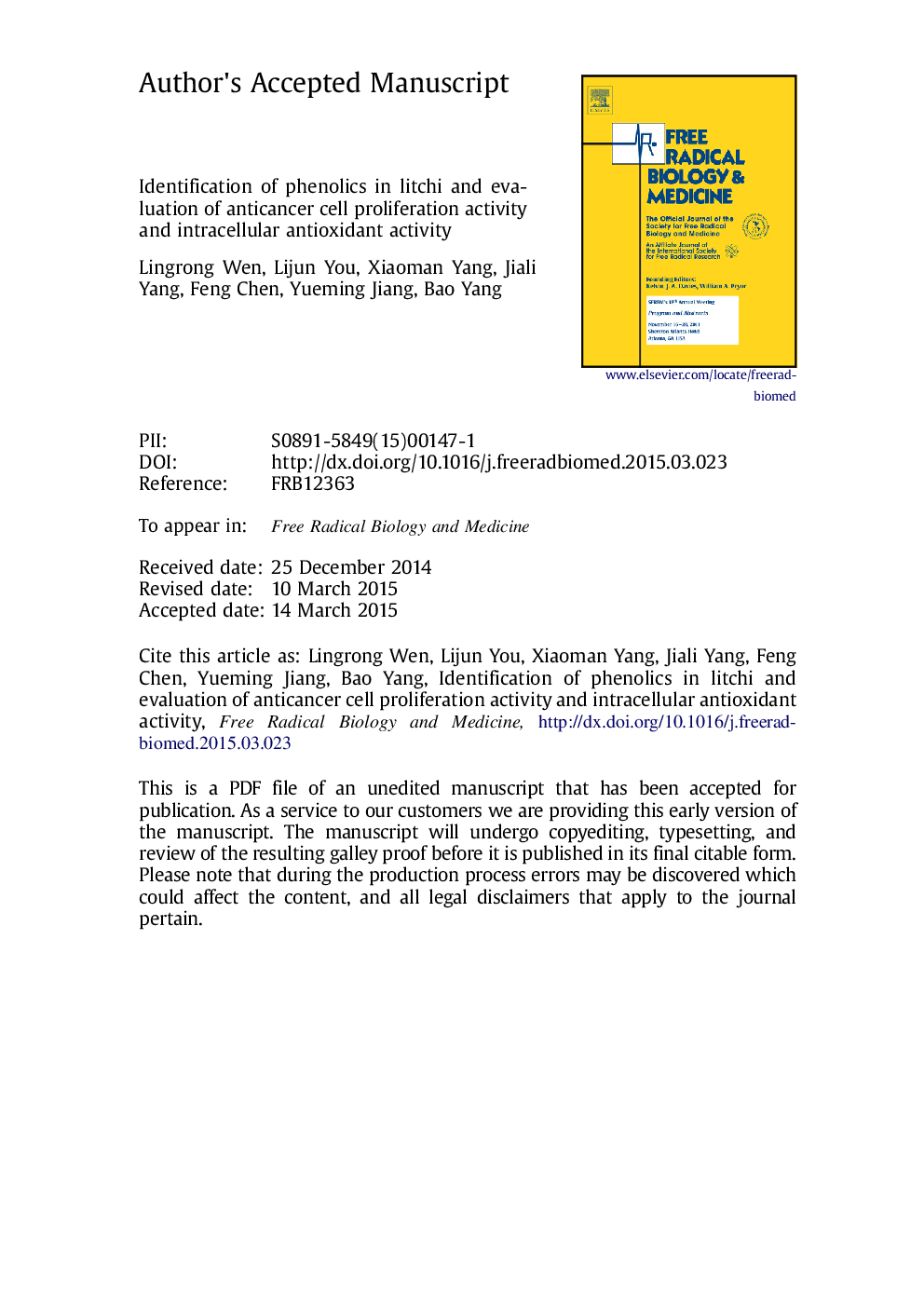| Article ID | Journal | Published Year | Pages | File Type |
|---|---|---|---|---|
| 8269255 | Free Radical Biology and Medicine | 2015 | 50 Pages |
Abstract
Litchi leaf is a good resource for phenolics, which are good candidates for medicines. In this work, three phenolics were isolated from litchi leaf by column chromatography. Their structures were identified by electrospray ionization-mass spectrometry (ESI-MS) and nuclear magnetic resonance (NMR) spectroscopy as secoisolariciresinol 9â²-O-β-D-xyloside (1), 4,7,7â²,8â²,9,9â²-hexahydroxy-3,3â²-dimethoxy-8,4â²-oxyneolignan (2), and cinnamtannin B1 (3). Cinnamtannin B1 showed better extra- and intracellular antioxidant activities than Compound 1, Compound 2. The intracellular antioxidant activity of cinnamtannin B1 was related to the upregulation of endogenous antioxidant enzyme activities (superoxide dismutase, catalase, and glutathione peroxidase), and inhibition of ROS generation. Furthermore, cinnamtannin B1 exhibited strong antiproliferative effects against HepG2 and Siha cell lines with no significant cytotoxicities. In the case of the HepG2 cell line, cell cycle arrest and apoptosis induction were the underlying anticancer mechanisms of cinnamtannin B1. The results indicated that cinnamtannin B1 was a potent cancer cell proliferation inhibitor and a good intracellular antioxidant.
Keywords
Related Topics
Life Sciences
Biochemistry, Genetics and Molecular Biology
Ageing
Authors
Lingrong Wen, Lijun You, Xiaoman Yang, Jiali Yang, Feng Chen, Yueming Jiang, Bao Yang,
